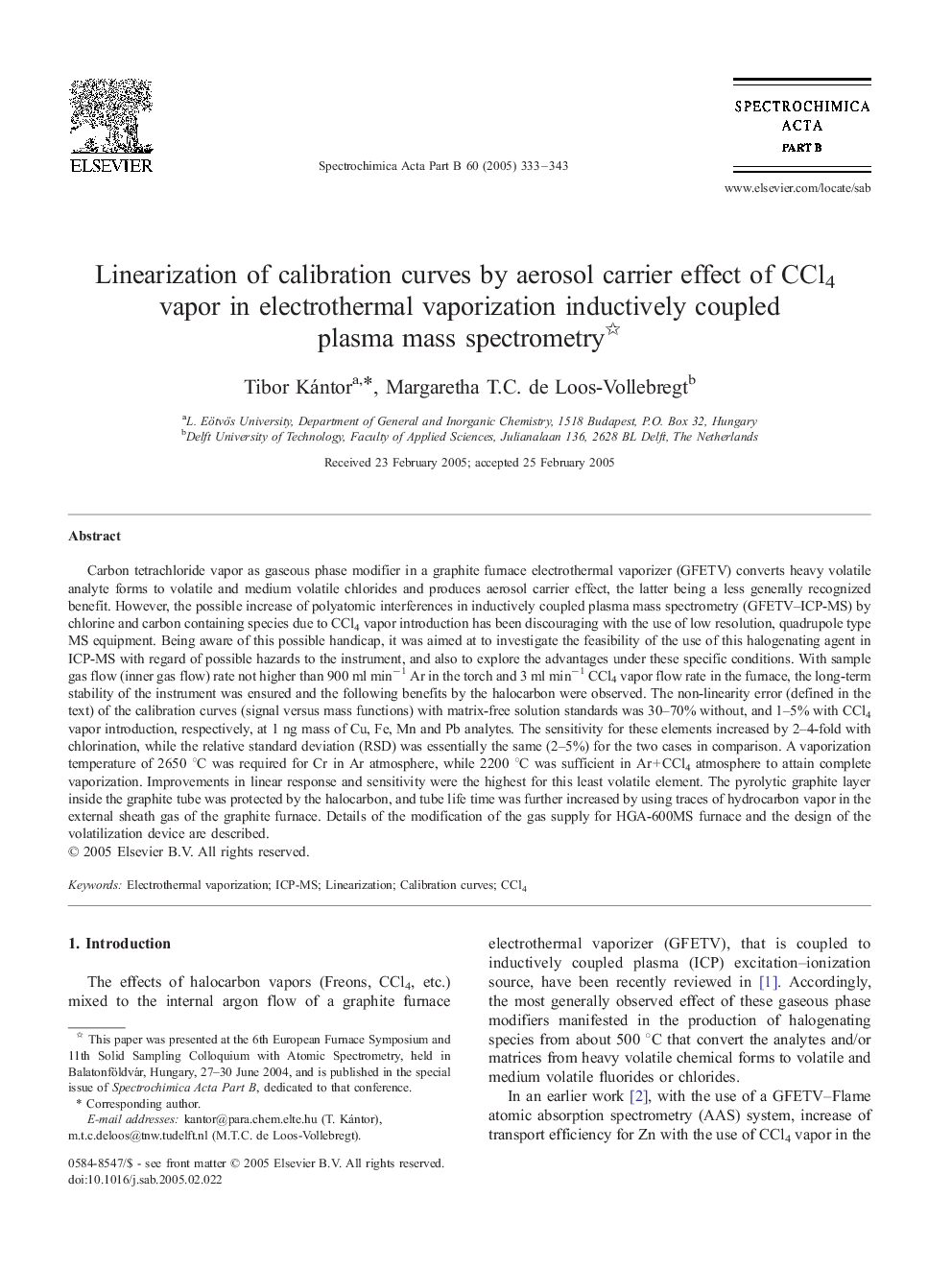| Article ID | Journal | Published Year | Pages | File Type |
|---|---|---|---|---|
| 10558572 | Spectrochimica Acta Part B: Atomic Spectroscopy | 2005 | 11 Pages |
Abstract
Carbon tetrachloride vapor as gaseous phase modifier in a graphite furnace electrothermal vaporizer (GFETV) converts heavy volatile analyte forms to volatile and medium volatile chlorides and produces aerosol carrier effect, the latter being a less generally recognized benefit. However, the possible increase of polyatomic interferences in inductively coupled plasma mass spectrometry (GFETV-ICP-MS) by chlorine and carbon containing species due to CCl4 vapor introduction has been discouraging with the use of low resolution, quadrupole type MS equipment. Being aware of this possible handicap, it was aimed at to investigate the feasibility of the use of this halogenating agent in ICP-MS with regard of possible hazards to the instrument, and also to explore the advantages under these specific conditions. With sample gas flow (inner gas flow) rate not higher than 900 ml minâ1 Ar in the torch and 3 ml minâ1 CCl4 vapor flow rate in the furnace, the long-term stability of the instrument was ensured and the following benefits by the halocarbon were observed. The non-linearity error (defined in the text) of the calibration curves (signal versus mass functions) with matrix-free solution standards was 30-70% without, and 1-5% with CCl4 vapor introduction, respectively, at 1 ng mass of Cu, Fe, Mn and Pb analytes. The sensitivity for these elements increased by 2-4-fold with chlorination, while the relative standard deviation (RSD) was essentially the same (2-5%) for the two cases in comparison. A vaporization temperature of 2650 °C was required for Cr in Ar atmosphere, while 2200 °C was sufficient in Ar + CCl4 atmosphere to attain complete vaporization. Improvements in linear response and sensitivity were the highest for this least volatile element. The pyrolytic graphite layer inside the graphite tube was protected by the halocarbon, and tube life time was further increased by using traces of hydrocarbon vapor in the external sheath gas of the graphite furnace. Details of the modification of the gas supply for HGA-600MS furnace and the design of the volatilization device are described.
Related Topics
Physical Sciences and Engineering
Chemistry
Analytical Chemistry
Authors
Tibor Kántor, Margaretha T.C. de Loos-Vollebregt,
